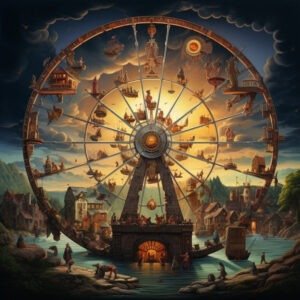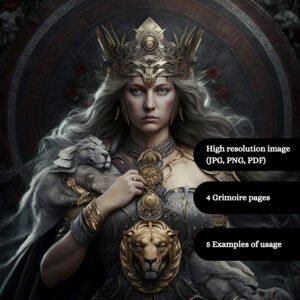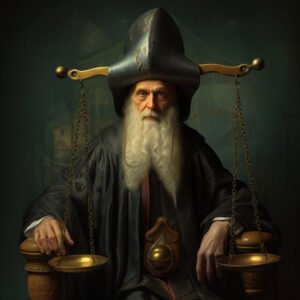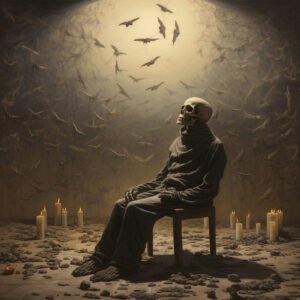Most people may find the term “witchcraft doctor” intriguing yet unsettling. These practitioners, often known as traditional healers or shamans, use ancient rituals and herbal remedies to address various physical and spiritual ailments. While their methods can be met with skepticism, many in communities worldwide view them as positively influential figures who provide healing and guidance. However, it is necessary to approach their practices with caution, as some may engage in dangerous or manipulative behaviors that can lead to significant consequences for you and your loved ones.
Definition of Witchcraft Doctor
The witchcraft doctor, often referred to as a traditional healer or spiritual practitioner, is an individual who employs various methods to address physical and psychological ailments through the use of herbal remedies, rituals, and spiritual guidance. Typically rooted in cultural beliefs, the role of a witchcraft doctor varies widely depending on the traditions and communities they serve, linking the natural and supernatural realms in their healing practices.
Historical Context
About the historical roots, witchcraft doctors have existed in diverse cultures for centuries, often serving as primary health care providers before the advent of modern medicine. Their practices are closely tied to local customs, beliefs, and indigenous knowledge, positioning them as integral figures in the social fabric of their communities.
Modern Interpretations
Along with cultural evolution, the interpretation of witchcraft doctors has transformed significantly in contemporary society. You may encounter varying perspectives, from viewing them as relics of an outdated belief system to recognizing them as vital components of holistic health practices that incorporate both physical and spiritual elements.
For instance, in today’s world, many people seek out witchcraft doctors for their distinct approach to healing, which often combines traditional wisdom with modern holistic practices. In some cultures, they are seen as trusted mental health counselors, providing insight and support in addition to herbal remedies. However, it’s important to approach these practitioners with caution, as some may exploit vulnerable individuals or promote dangerous practices. Understanding the balance between their cultural role and the necessity for critical evaluation can empower you to make informed choices about your health and well-being.
Roles and Responsibilities
There’s a unique blend of responsibilities that a witchcraft doctor carries in their community. You may find them acting as healers, advisors, and spiritual guides, utilizing their knowledge of traditional medicine and sacred practices to aid individuals in need. Their role often extends beyond physical healing, encompassing mental and emotional support, thereby fostering a sense of balance and well-being in your life.
Healing Practices
Responsibilities include identifying ailments through various techniques, such as herbal remedies, prayers, and spiritual cleansing. You might also seek their assistance in finding a connection with your ancestors, as this is believed to enhance your healing journey. They often create personalized treatment plans that align with your specific needs, ensuring a holistic approach to wellness.
Rituals and Ceremonies
Beside healing practices, witchcraft doctors often conduct rituals and ceremonies aimed at fostering spiritual growth and healing. You might participate in community gatherings where specific traditions are honored, promoting a sense of unity and purpose.
Healing rituals are not only for physical ailments but also serve to address emotional struggles and societal issues. These ceremonies often involve chanting, dancing, and offerings, connecting you deeply with your cultural heritage. Additionally, they can serve to ward off negative energies and invite positive influences into your life, thereby enhancing mental clarity and emotional strength. Engaging in these practices can lead to a transformative experience, reinforcing your sense of community and spiritual connection.
Cultural Significance
One of the fascinating aspects of witchcraft doctors is their deep-rooted cultural significance within various societies. They often serve as healing figures, blending traditional practices with spiritual beliefs. Their roles are intertwined with community dynamics, as they provide not only remedies for ailments but also guidance and a sense of belonging. In many cultures, witchcraft doctors play a continual role in rituals that reinforce social norms and values, making them vital to the fabric of communal life.
Societal Perception
Between admiration and fear, the societal perception of witchcraft doctors varies greatly across regions. In some cultures, they are revered as wise sages, while in others, they are stigmatized and seen as sources of malevolence. Your understanding of how communities view these figures can influence your perspective on their practices and the traditions they uphold.
Witchcraft in Different Cultures
With its rich tapestry woven throughout history, witchcraft manifests uniquely across different cultures. Each society brings its beliefs, rituals, and practices, reshaping the role of witchcraft doctors. This diversity can lead to positive healing practices as well as instances of persecution or misunderstanding. Your exploration of these different cultural perspectives can reveal insights into how people interpret the supernatural and seek solutions to their problems.
Another example of witchcraft in different cultures is seen in Africa, where traditional healers often employ herbal remedies alongside spiritual rituals. These practitioners are respected for their ability to communicate with the spirit world and diagnose illnesses that may arise from supernatural causes. In contrast, in some parts of Europe, witchcraft has historically been associated with witch hunts, leading to grave injustices against those accused. Understanding these contrasting views allows you to appreciate the complexity surrounding witchcraft and its enduring impact on human societies.
Tools and Methods
To explore the world of witchcraft doctors, you need to understand the diverse tools and methods they employ. These practitioners utilize a combination of historical knowledge and personal intuition, employing various techniques ranging from herbal remedies to ritualistic practices. Each tool serves a specific purpose in their healing or divination processes, helping you harness energies and influence outcomes in your life.
Herbs and Remedies
Methods used by witchcraft doctors often involve natural remedies sourced from local flora. They employ an extensive knowledge of herbs, plants, and minerals to create potions and tinctures aimed at addressing both physical ailments and spiritual concerns. By utilizing these remedies, you can tap into the healing properties of nature.
Ritual Objects
About the tools of witchcraft, a variety of ritual objects play an vital role in a witchcraft doctor’s practice. These objects can range from crystals and candles to ceremonial knives and altars. Each item holds symbolic significance and is utilized to direct energy and intention during rituals.
Consequently, these ritual objects not only act as conduits for energy but also serve to enhance your spiritual connection during practices. Using these items, you can focus your intentions and cultivate a deeper understanding of your personal power. It’s vital to respect these objects, as their energetic properties can influence the outcomes of your rituals, whether positive or negative.

Witchcraft Doctors vs. Traditional Healers
Not all practitioners fall neatly into one category. While witchcraft doctors and traditional healers both aim to alleviate ailments, their methods and underlying beliefs markedly differ. Witchcraft doctors often utilize rituals and spells rooted in cultural belief systems, whereas traditional healers may rely on herbal medicine and ancestral knowledge to provide care. Understanding these distinctions is important for recognizing how each practitioner contributes to health and wellness in various communities.
Similarities
Witchcraft doctors and traditional healers share a common goal: to improve health and well-being for those they serve. Both utilize extensive knowledge of herbs, plants, and spiritual practices to diagnose and treat various ailments. Furthermore, they often hold respected positions within their communities, acting as intermediaries between the physical and spiritual worlds. This connection fosters trust among clients, reinforcing the importance of both types of healers in cultural contexts.
Differences
For all their similarities, witchcraft doctors and traditional healers maintain distinct differences in their practices and beliefs. Witchcraft doctors often rely on supernatural elements such as curses or blessings, while traditional healers emphasize evidence-based approaches grounded in herbal remedies and empirical knowledge.
Also, the approach you might encounter with a witchcraft doctor often involves ritualistic practices and a reliance on spiritual interventions, which can sometimes lead to dependence on these supernatural elements for healing. In contrast, traditional healers focus on natural remedies that can promote healing without the spiritual context. The incorporation of herbs and holistic methods signifies an emphasis on physical health, making traditional healing techniques accessible and sustainable for many individuals. Understanding these differences can empower you to choose the best path for your health journey.
Challenges and Controversies
For many, the practice of witchcraft medicine is shrouded in misunderstanding and skepticism. Critics often question the legitimacy of these traditional healers, citing potential risks to patient safety and mental well-being. Furthermore, cultural stigmas can lead to social ostracization or even violent backlash against those who seek or provide such services. Navigating these challenges requires a nuanced understanding of the cultural contexts in which witchcraft doctors operate.
Legal Issues
Before engaging with a witchcraft doctor, you should consider the legal implications in your region. In some areas, the practice may be illegal or subject to restrictions, resulting in potential legal consequences for both practitioners and clients. Familiarizing yourself with local laws is imperative to ensure that your interactions stay within legal boundaries.
Misconceptions
Legal misconceptions surrounding witchcraft doctors often stem from a lack of understanding of their practices. You might think of these healers as purely mystical figures, but many possess significant knowledge of herbal medicine and traditional healing techniques. The portrayal of witchcraft as dangerous can distract from the many aspects of their practice that are rooted in cultural traditions and holistic healing.
Plus, it’s important to understand that not all practices associated with witchcraft are harmful. While there are some cases where exploitation or fraud may arise, many witchcraft doctors genuinely aim to help their clients. They utilize a blend of spiritual guidance and traditional knowledge that can offer comfort and support. You can benefit from this rich tradition by approaching it with an open mind, distinguishing between misconceptions and clinical practices rooted in your community’s history.

Wheel of Fortune...
2.19$
The Hanged Man’s...
2.19$Final Words
Ultimately, understanding what a witchcraft doctor is can enhance your appreciation for diverse healing practices within various cultures. Often combining traditional medicine with spiritual elements, these practitioners offer unique remedies rooted in historical beliefs. If you’re exploring alternative health options or cultural healing methods, consider the important role that witchcraft doctors play in their communities. This knowledge can enrich your perspective on holistic health approaches and the various modalities available to you.
Disclaimer
This blog does not provide medical advice. It is intended for informational purposes only. It is not a substitute for professional medical advice, diagnosis or treatment.


















